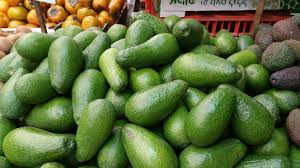The Avocado Trend: Why They’re Good for Us, How to Pick Ripe Ones & Find Cheap Ones
- Deeni Betar-Young

- Jun 17, 2019
- 3 min read
Updated: Feb 12, 2020
Avo's have been having a big moment lately. Sales in Australia have hit an all-time high, Instagram accounts featuring avocado art have gone viral, and money experts have even gone as far as to argue that millennials' costly obsession with smashed avo on toast is preventing them from entering the housing market! (hmm...)
So why the obsession? Well, lots of reasons: taste, texture, nutritional value... whether it's sliced, blitzed, mashed or smashed, adding avo's into our day just seems to make it a little bit better. If you're a lover of this creamy fruit, here are some helpful tips and interesting facts to know... How to pick them: In Australia we generally have two types of avocados- Hass, and (the less popular) Shepard variety. At the supermarket, either can be picked up at any stage of ripeness (except overripe) as they will continue to ripen at home. To store them, keep ripe ones in the fridge to slow ripening, and underripe ones out in room temperature to continue ripening. You will know they're ripe when:
They turn green-black (Hass avocados only)
You can feel that it's soft inside when you gently squeeze the top (smaller part) it in your palm
You can pull off the remaining stem (the 'naval') without using force.
Don't worry if you cut it open and it's not ripe yet- just leave it out for a few days to ripen fully.
How to eat them: Avocados aren't only good in a guacamole or salad - they are so many more delicious ways to eat them. If you're a fan of smoothies, try adding some in for a creamier texture (here’s a delicious recipe).

Or, cook it - place plain slices under the grill for a warm snack, or add it to your homemade pizza. It can also be a great way to use unripe ones as they soften when cooked. Avo's also work really well in creamy dishes, since they make for a great cream substitute. Try this avocado chocolate mousse, this pasta alfredo or this brownie recipe. For a dose of good bacteria, try pairing avo with sauerkraut on toast or crackers. They go amazingly well together!
Why they're good for us:
Antioxidants Anti-ageing, mood-boosting, wound-healing... who wouldn't want more antioxidants in their diet? Avocados are packed full of antioxidants in the form of vitamins and phytonutrient pigments that give them their vibrant green and yellow colours.
Fibre Most Australians are seriously lacking in this. Avocados are very high in soluble fibre- just one provides one third of our daily recommended fibre intake. This kind of fibre lowers cholesterol, encourages stable blood glucose levels and promotes a healthy bowel.
Healthy fats Move over olive oil- avocado is a rich source of the heart-healthy monounsaturated fats also found in olives. This type of fat increases the good cholesterol in our blood and reduces the bad cholesterol, which reduces risk of a heart attack or stroke. But, unlike olive oil, which is really just fat with trace amounts of vitamins, avocados are a package deal with lots of other nutrients to offer. The fat in avocado also helps us to absorb the antioxidants and fat-soluble vitamins (vitamin A, D, E and K) it contains (or that of any foods eaten with it).
Potassium Often when we think of potassium, bananas come to mind, but avocados actually have more potassium than bananas. Potassium has numerous health benefits, including lowering blood pressure and conducting nerve impulses.
Folate Folate is a B-vitamin needed by the body to repair DNA and make red blood cells. It's especially important for pregnant women to obtain folate -their needs increase by 50%- for foetal growth and development. Without it, babies are at an increased risk for developing birth defects.
How to buy them on a budget:

One of the not-so-great things about avocados is their cost. To avoid forking out big bucks for your avo's, plan ahead - if you know you're going to be using some in the next week or so, buy the smaller, unripe ones found in most supermarkets in packs or individually, selling for cheaper than the larger riper ones. Leave some out to ripen in a few days, and keep the rest in the fridge to ripen later. Or, if you're in Adelaide, pop into the Central Market and grab some at the produce stalls for much less than supermarket ones.





Comments